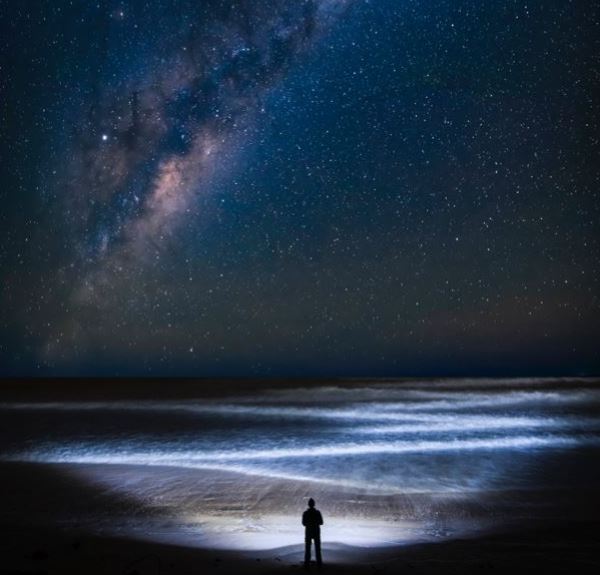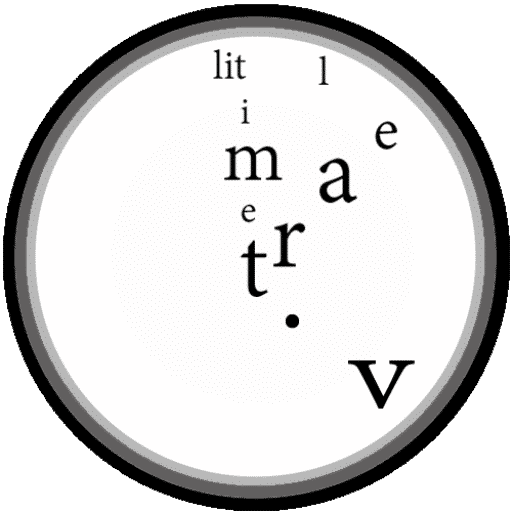
Although frequenting bookstores is a great hobby of mine, I try my best not to buy more books. For one thing, I have too many books to read at home that I haven’t gotten to yet. And my other reason for banning myself from impulsive book purchases is the fact that I can, and should, make more usage of libraries that abound nearby. Yet, I recently bought myself another book: Javier Zamora’s Solito.
I have a tendency to read genres I naturally gravitate towards, like historical fiction, classics, and young adult fantasies. So getting a copy of Solito: A Memoir was an out of the ordinary decision. (And, might I add, choosing to read the nonfiction for a book club amidst a jam-packed schedule was almost a form of self-torture.)
Despite the stacks of unread books haunting me at home along with the unusuality and impracticality of my decision, I so, so do not regret it.
Because Javier Zamora’s Solito is a memoir like no other.

Synopsis of Solito:
Solito narrates the true story of Javier Zamora when he was just nine-years-old and the journey he made from El Salvadaor across Guatemala and Mexico to the United States to reunite with his parents who had migrated before him. It details Javier’s life before, during, and after the long, dangerous “trip,” the people he had to leave behind as well as those he met along the way.

Reflections
I didn’t know what to expect from this book other than the fact that it was going to be a story about a boy who immigrates to the states. Never did I imagine how detailed, how honest the account was going to be. Not only did it record every bit of the innocence and vulnerability of Javier Zamora’s younger self, but also it zoomed in on the immigrant experience, specifically those of migrants who cross the U.S.-Mexican border. It revealed how illegal immigration isn’t just a term and concept but a streak of hope for people who aren’t simply “criminals” or “lawbreakers” but rather individuals trying to survive. Many of whom, like Javier, Chino, Patricia, and Carla, are trying to reunite with their families in the land of opportunity and hope.
For someone like me who doesn’t know anyone who has crossed the border to come to the states or have read any accounts detailing such journeys, Solito was, to say the least, eye-opening. I never knew the details of these long journeys, and how they were matters of life or death, success or failure, joy or despair, and reunion or separation.
One of my fellow book club member pointed out that this story focuses on one boy and the people around him, which is just a small fraction of the countless undocumented immigrants and numerous migrants who don’t make it to their desired destinations. Her statement made me realize how many other stories of success, failure, misfortune, and grief we don’t know about.

Innocence of a Child

What was painful to notice was the innocence of the author before the great journey and his loss of it afterwards. The nine-year-old Javier refers to his upcoming journey to the states as a “trip.” That’s what all the adults around him referred it to. He knows neither better nor what to expect.
But slowly, the “trip” becomes more than just a trip Javier embarks on to reunite with his parents. It’s saying good-bye to everything he loves, his home and family in El Salvador, to his friends, school, and everything he knew all his life. Suddenly meeting a group of strangers who he needs to depend on and pretend to be families with. Riding hours-long bus and boat rides. Living like a shadow hiding from the locals, stuck inside some dark shelters. Pretending to be Mexican, getting caught and having guns pointed at by soldiers. Walking across deserts for days, under the scorching sun without water and in the middle of the freezing night.
And Loss There Of
Initially, Javier repeatedly refers to the “cadejito.” According to his grandfather, this legendary creature would protect and guide Javier. He prays to it throughout the journey (for instance, on page 79 and 82).
But on page 323, Javier says to himself:
“Last time, I listened for Cadejo’s whistle; now I know for sure he doesn’t exist. Bad things keep happening. He’s just a myth. Just like Marcelo, Cajedo is full of lies. If Cadejo was real, we wouldn’t have gotten caught. Patricia wouldn’t have gotten hurt. Coco Liso would still be here with us. Our prayers haven’t helped either.”
It was heartbreaking to see this transition, from Javier believing in the cadejo to his losing faith and innocence. To watch this young boy (more sensitive than an average nine-year-old per description, I think) undergo hardship after hardship that is overwhelming even to an adult.

Beautiful Imagery

Javier Zamora immerses the readers into his deepest memories not only through the raw details but also through his talented use of imagery.
I mean, just take a look at this scene where Javier parts ways with his grandfather:
We stand by the road, the banana trees on either side, raindrops still on the leaves, sliding down, dropping to the ground. It rained earlier in the day, but these drops haven’t evaporated. Grandpa’s eyes are doing the same, trying to hold his tears inside their corners (Zamora 71).
And his descriptions of the desert are beautiful and ingenious at the same time:
Everything is awake. The moon lights the ground silver and blue. Wispy clouds dance in the sky, white ones that look like silk. With this wind and with this lighting – the blue, the grays – it feels like the bottom of the ocean… The grass is seaweed. The cactuses are coral. We’re looking through a submarine’s small circular window… On top, the clouds are sea foam. The ground sparkles with seashells and pearls (Zamora 298).
Child’s Imagination
Another thing that struck out to me (and I appreciated very much) were the imaginative descriptions from the nine-year-old Javier. Just take a look at these cleverly brilliant descriptions from the young boy’s perspective:
The stars begin to dot the sky. I like to think there’s a giant holding the earth in one hand, a needle in his other hand, poking the sky there, there, and there – (Zamora 135).
And I couldn’t help but smile at the names Javier gave to different cacti when he spotted them during his trek across the desert: “the Spikeys,” “Cheerleader bush” with flowers like “little yellow pom-poms,” “Crayon bush,” and “Paint-Roller Fuzzies,” “Mascara-Brush Fuzzies,” “Thorny Tentacles,” and “skinny green smooth tree” that Javier nicknames “SGS tree.”

There are countless other examples of uniquely clever imagery that Javier uses throughout the book, like when he describes the line of migrants as “the centipede” or when he says that cactuses that look like people “rise from the dirt like giant dark-green Cheetos” (331).
But sometimes, they were gut-wrenching to read, like when he describes the people in prison, including himself, as “monkeys”:
The monkeys in here stare, they sleep, they doze. This cage. This silent and stinky room. The monkeys next to the door wait for their names to be called (248).
Theme of Loneliness

Though my post is getting a bit long, I must point out what I felt was one of the most important themes of this book: loneliness. The book starts with a lonely Javier. Despite his being with his grandparents, aunt Mali, friends and relatives, he naturally and understandably longs for his parents constantly.
And his loneliness resurfaces when he has to travel with a group of strangers by himself. He holds his pillow in one arm, pretending the pillow is his Mom or aunt Mali (78). The young Javier also repeatedly mentions how he wants to hug, saying that he wants to “hug anyone like Coyote hugged us for good luck” (201)
I think this quote best shows the acute loneliness he experienced during the long and difficult journey:
I want to cuddle her [aunt Mali] right now. Look at the stars and be far away from these people…I hate watching Patricia and Carla help each other before bed. Patricia braiding and unbraiding her daughter’s hair. I want that with Mom. With Mali. I just want a hug (183).
With all the hardships and drama that ensued, I honestly forgot about this major theme and was busy following Javier’s journey, rooting for him and the people around him as they repeatedly failed to rejoin their families in “La USA.” But the theme dawned on me again when this young boy named a certain type of cactus as “the Lonelies” (217) and when he wished not to part from strangers who had become a true family:
I want to take my new family with me to California, learn how to tie my shoes and show Chino I can do it like him. Chino, my older brother I never had… I love them. I really love them. A pond, a lake in my eyes. I don’t want to let go. None of us wants to let go. A river (372-73).
Integration of the Spanish Language
Lastly but certainly not least is the usage of Spanish throughout the book. Because I had studied some Spanish, it wasn’t difficult to understand most of the time but I did have to look up online sometimes to figure out what Javier and the people around him were saying. But I think the implementation of Spanish in dialogue as well as in Javier’s internal thoughts (like the word “también” and “La USA”) made this memoir all the more real, easy to immerse into. And I think the Spanish phrases and words, even the punctuations, are great integrations that honor the author’s cultural background and heritage.

Lasting Impact
My book club leader told us that Solito stayed with her for a long time after her first reading of it, and it led her to designate it as our first book club book of the year.
I can confidently say that it has left such a strong impression on me as well, that it has expanded my understanding of the immigrant experience. It stayed with me so strongly even after I finished that I had to visit an El Salvadoran restaurant and mull over it while eating pupusas:


Queso con Loroco (Cheese and Salvadoran flower) and Frijoles con Queso (House black beans & cheese)
And I’m pretty sure that Javier Zamora’s memoir will leave something in you as well.
Conclusion
Javier Zamora’s Solito: A Memoir is a powerfully moving, achingly raw account of a nine-year-old boy. It’s a collection of memories of longing, pain, and loneliness, so vivid and overwhelming even to adults. It forever changes the reader, whether by enlightening, moving, or just leaving a mark – an impression that lingers even long after.

P.S. The afterward of the book was fascinating to read, as Javier Zamora shares what his parents had experienced while he was going through the dangerous journey. And it was so touching to read that he wrote this memoir in hopes of reuniting with Chino, Patricia, and Carla.
P.P.S. HERE‘s a video of Javier reading from Solito and HERE is one of his talking about the memoir.
P.P.P.S. The Salvadoran restaurant I visited is called Cafe Platano in Berkeley, CA. Their pupusas and avocado salad were delicious! 😋










































